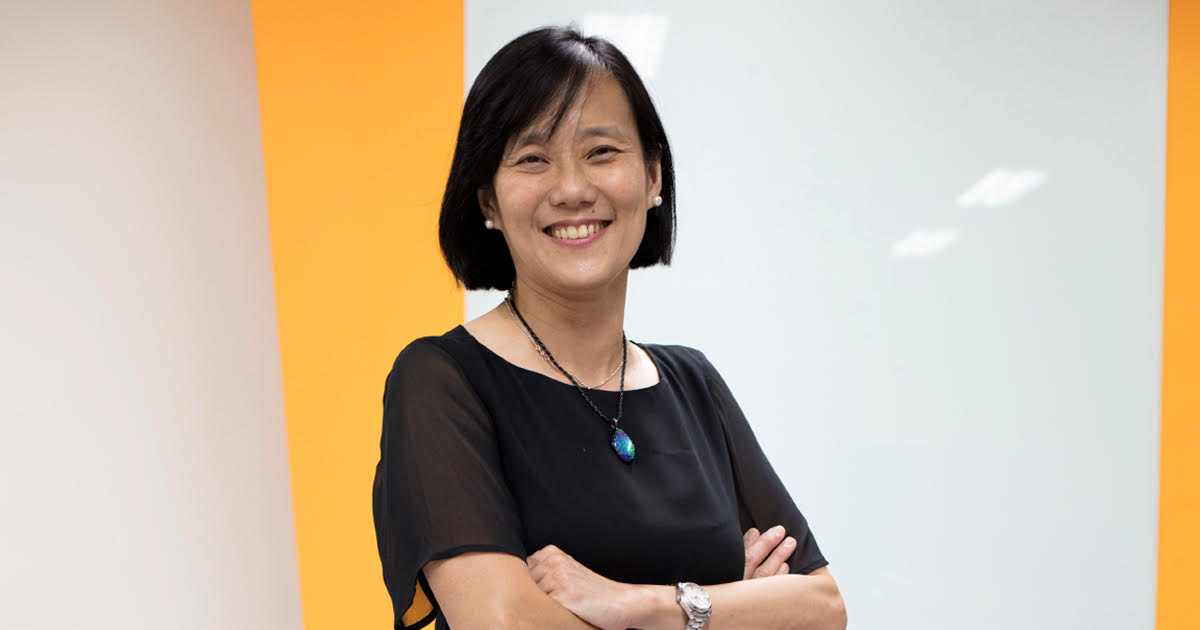Yeo Cheng Yong, Fuhua Secondary, President’s Award for Teachers 2020 Recipient
It’s your first day in a new environment. There’s so much to do, and so many things to learn, and above all, you have to assimilate into a new culture…
That’s not just the experience of a new student in school – it’s what new teachers feel too, said Yeo Cheng Yong. Twenty eight years ago, she felt equally apprehensive when, fresh out of teacher training, she found herself in a classroom of noisy students, each with their unique learning needs.
“Back then I sought out informal mentors – senior teachers and School Leaders when I had doubts. I picked up so many tips: how to identify gaps in students’ learning, how to communicate with parents…” she said.
Being the best teachers
But for Beginning Teachers (BTs) coming into Fuhua Secondary School, where Cheng Yong is mentoring coordinator, it’s a very different scenario.
The school has a structured mentoring programme with scheduled time spent weekly with a subject mentor, fortnightly dialogues with senior teachers, and meetings each term with Cheng Yong, the Lead Teacher/Mathematics of the school.
“The time scheduled can be lesson observation by mentors or senior teachers or a dialogue/classroom walkthrough by the lead teacher. With a department mentor to support the BT in their subject area and a buddy to take care of their well-being, structured mentoring allows focused dialogues… and gives clarity to the BT as to whom they can approach for help.
She also tells BTs that the two letters BT stand for Best Teacher. Labelling them as “beginning teachers” may make them reluctant to voice their opinions. “I want each of them to be their best in their unique way.”
Many of those she mentored are now in leadership roles as Subject Heads and Heads of Department. Cheng Yong believes that while the mentoring process can end, the mentoring relationship cannot.
Teaching in the garden of the mind
To bring out the best in her young charges, Cheng Yong takes a leaf out of a gardening strategy – pairing a mentor, whom she calls a ‘marigold’, with a Beginning Teacher.
“Certain vegetables and plants when placed near others improve growth for one or both plants. And marigolds are the best companion plants.
“Marigolds exist in schools as well – encouraging and supporting teachers in their growth. I strive to be a ‘marigold’ to my students and colleagues and I have been blessed with many platforms to serve as one.”
One way in which she does this is through the Teahouse Chapter.
The Teahouse Chapter is a safe platform for BTs to raise concerns and questions, exchange experiences and learn from one another. They even role-play difficult situations and work on their responses.
“It’s a relaxed environment where we come together to discuss issues.”
When the teacher becomes the student
“I learnt a lot from my mentees, too,” Cheng Yong says. “When given space and time, they can rise to the occasion. I learnt the importance of when to ‘step back’ at times … and to affirm their independence when they are ready.”
For instance, Cheng Yong worked with two of her department BT mentees, who are now senior members of the department, to take mathematics lessons online during the full Home-based Learning period. She found that their shared experience but different perspectives helped them develop not only engaging lessons, but also targeted online marking of the assignments to augment the students’ learning.
“We decided to use DocHub, Kami and other tools to provide individualised feedback to the students, as well as dedicated google meet sessions to check students’ understanding of concepts, and to provide generic feedback. We gathered common errors and created a slide deck for the students,” she said.
“Empowering and believing in others is important. Hence, flexibility in my approach is something I aim for.”
As an experienced mentor, Cheng Yong is also eager to help other teachers who have just stepped up to take new roles. She started the “Mentoring the Mentors” programme with two other like-minded Lead Teachers within her school cluster in 2017. This initiative is part of the leadership course for Lead Teachers.
The trio have conducted workshops for school key personnel, in the hope of sharing best practices that can positively influence and impact others.
One moment that she recalls with pride: When she heard the first batch of BTs she had taught, telling the new batch that came in, “Who are you going to be a marigold to, today?”
The marigold effect in the classroom
Cheng Yong’s ability to connect with those under her charge is brought to greatest focus in the classroom. Her students – even the most recalcitrant ones – respond to her because they know she cares.
Her strategies range from getting her students to end the lesson with a positive quote to adding designs to the cover page of their Maths file.
“I have had students stand up and say they hate Maths. The designs indicate to me the students’ feelings towards Math. This helps me understand them better and to know how I can change negative feelings to positive ones,” she says.
Another strategy Cheng Yong employs to change students’ negative mindsets is to encourage students to ask questions as soon as they have them. “This promotes curiosity and builds confidence in Mathematics.”
Then there is the rapping and song-making.
She had her students come up with a song about parallel and perpendicular lines to help them remember the concepts better.
To allow students to better understand trigonometry, she got them to ‘illustrate’ different angles with their bodies. This helped her Secondary 3 classes grasp the concept of bearings and angles in minutes.
Two-way feedback
To build students’ confidence in Maths, she follows the “I do, We do, You do” approach. This starts with the teacher working through a problem (I do), followed by the students working in groups (We do), and then the student attempting the problem on his own and taking ownership (You do).
She also helps her students differentiate between careless mistakes and errors. The first, the students will fix themselves. But the errors, which indicate misconceptions, she addresses.
To get students comfortable with acknowledging errors, they discuss what they have done right as well as the classic mistakes they have made. The classic mistakes, which are tagged to the students, are posted in the classroom to increase the students’ confidence in acknowledging mistakes.
At the end of each term, she invites students to give feedback on her teaching methods, which she learns from and makes adjustments accordingly.
“It helps me to be a reflective and mindful teacher who seeks to take deliberate steps in selecting my materials and the way I enact my lessons and plan for collaborative learning,” she said.
“The students feel empowered – that they have a say in my teaching, just like I have a say in their learning when I give them feedback.”
The feedback of students include, “You teach with clarity” and “You make Mathematics fun”. But her favourite is: “You don’t teach Mathematics, you teach life. That’s one of the best, so far…”






